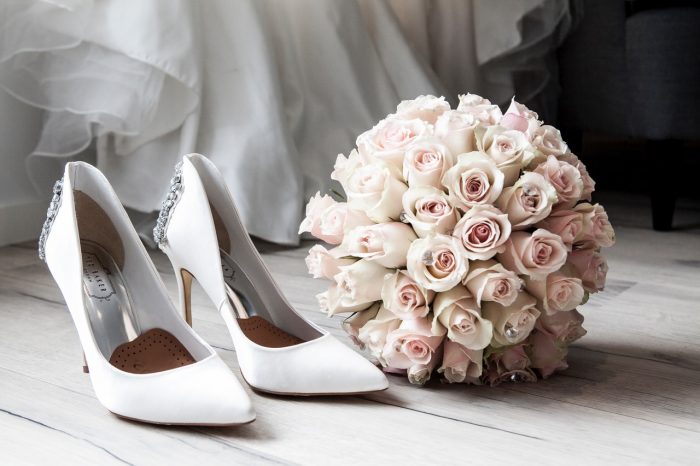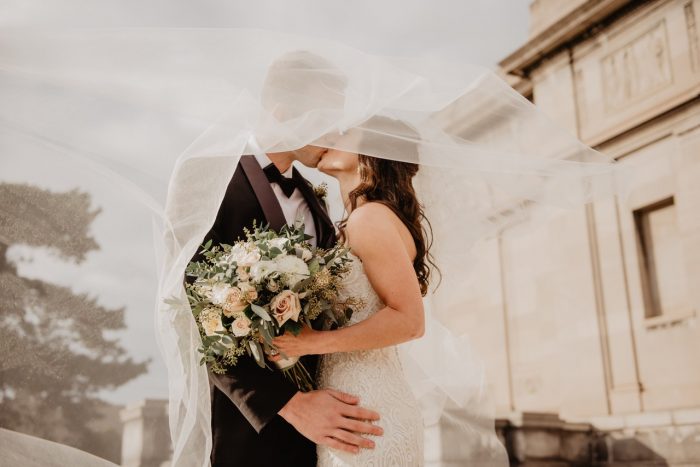Everyone has a unique story and background. When couples get married, they unite two families. This also can bring very different traditions into the mix.

Whether you want to stick to your family’s tradition or are looking to create your own, here are 8 options you may want to consider for your special day.
The Engagement Ring
The history of the engagement ring and wedding band dates back to the time of the Egyptians. The pharaohs were the first to use the rings to represent eternity, as a circle has no beginning or end. Rings also represented the shape of the moon and the sun, which they worshiped.
Buying an engagement ring symbolizes the eternal bond you will be sharing for the rest of your lives together. Selecting the right ring for your partner will make a statement, as the ring is a timeless piece that goes well beyond the wedding day.
Golden Crowns of Norway
In Norway, it’s become a tradition for brides to wear elaborate crowns made of silver and gold. Little charms dangle from the crown, and the sound is meant to ward off any evil spirits.
Wearing White on Your Wedding Day

Queen Victoria was the first woman who made wearing white on your wedding day a custom. She married in 1840, wearing a cream-colored gown. Ever since, the white dress has been popularized by the media.
But guess what? You have to wear white on your wedding day. While the color is said to represent purity, it’s a certain wedding attribute that only holds significance if you choose such.
“Lazo”
Mexican culture is very big on traditions. During the wedding ceremony, a couple will have a “lazo,” also known as a lasso, draped around their necks in the shape of a figure-eight. Also known as the infinity symbol, the lasso made of rosary beads and flowers resembles how they intend to have their marriage last for eternity.
Something Old, Something New
According to a rhyme in Old English, there are four things a bride needs on her wedding day for good luck. Something old, something new, something borrowed, and something blue.
The old represents the couples’ past lives and the new represents a future filled with happiness. Something borrowed is meant to come from someone who is happily married to give them a touch of their good fortune. Lastly, blue is the color of fidelity and love.
Bridal Bouquets

In ancient Greece and Rome, brides wouldn’t carry flowers, but rather herbs such as garlic and dill to deflect evil spirits.
It wasn’t until, once again, Queen Victoria decided to carry her favorite flowers down the aisle that this became popular. While not everyone chooses to use snowdrops like the queen, it certainly was an inspiration for many years to come.
Matching Outfits
Bridesmaids and groomsmen alike will wear identical outfits as a wedding tradition. While it does look quite lovely in photographs, there’s a tradition of matching outfits that goes back to Roman times.
In ancient Rome, matching attire was considered to be good luck. They believed evil spirits would come to the wedding and bring a curse on the newlyweds. Bridesmaids were meant to be a decoy, confusing the spirits by wearing outfits similar to the bride.
Giving the Bride Away

Not everyone gets to choose their partner. The idea of giving the bride away dates back to when arranged marriages were the norm.
The idea would be to give the bride away as a transfer of ownership. Today, this tradition is thankfully much more of an endearing gesture as the father or mother escorts the bride down the aisle as an act of love.
Conclusion
Wedding traditions from around the world and time periods all have made an impact on the weddings you see today. No matter if you choose to keep the same traditions or start your own, it’ll be a beautiful representation of the love you share for years to come.










